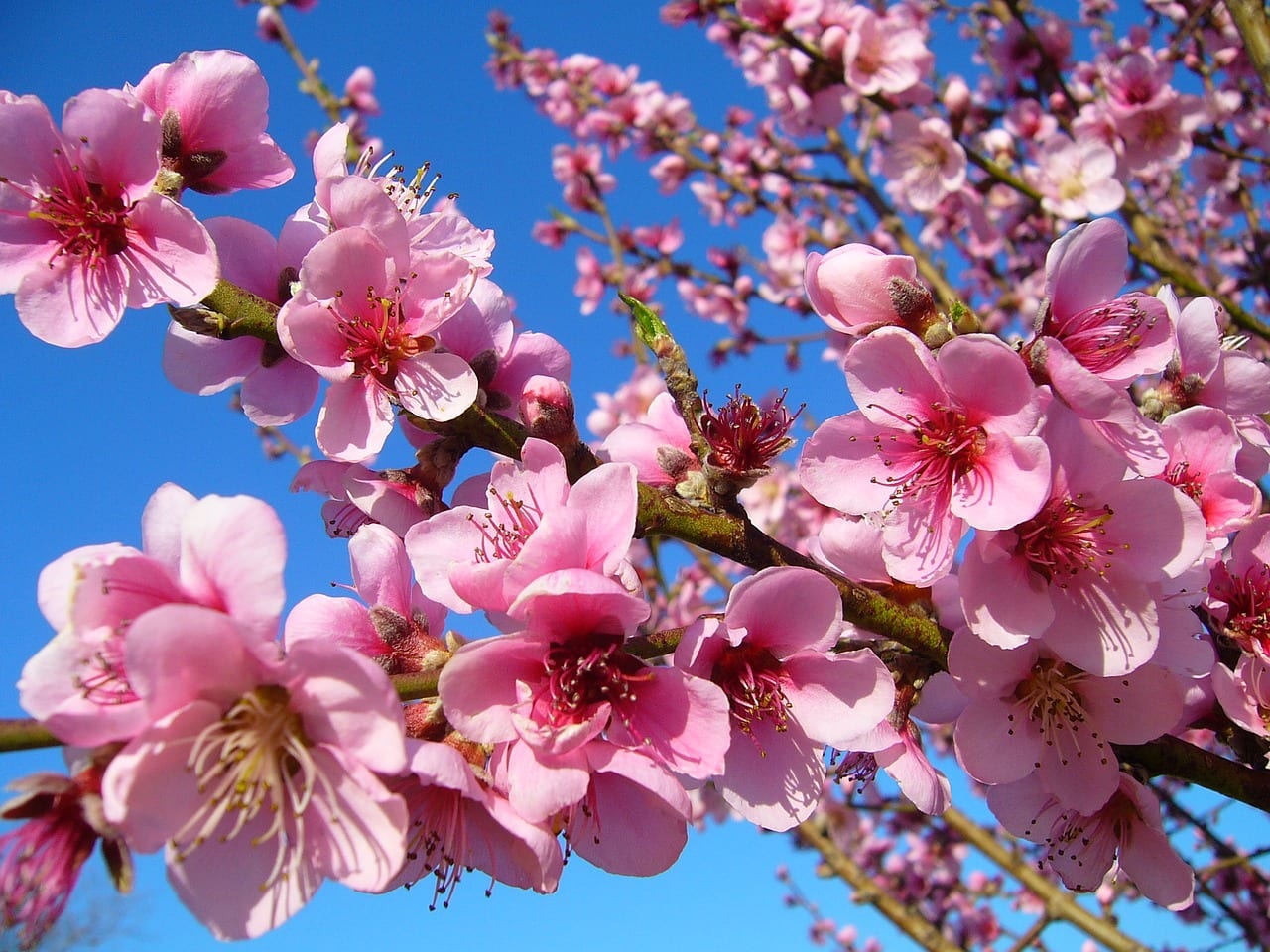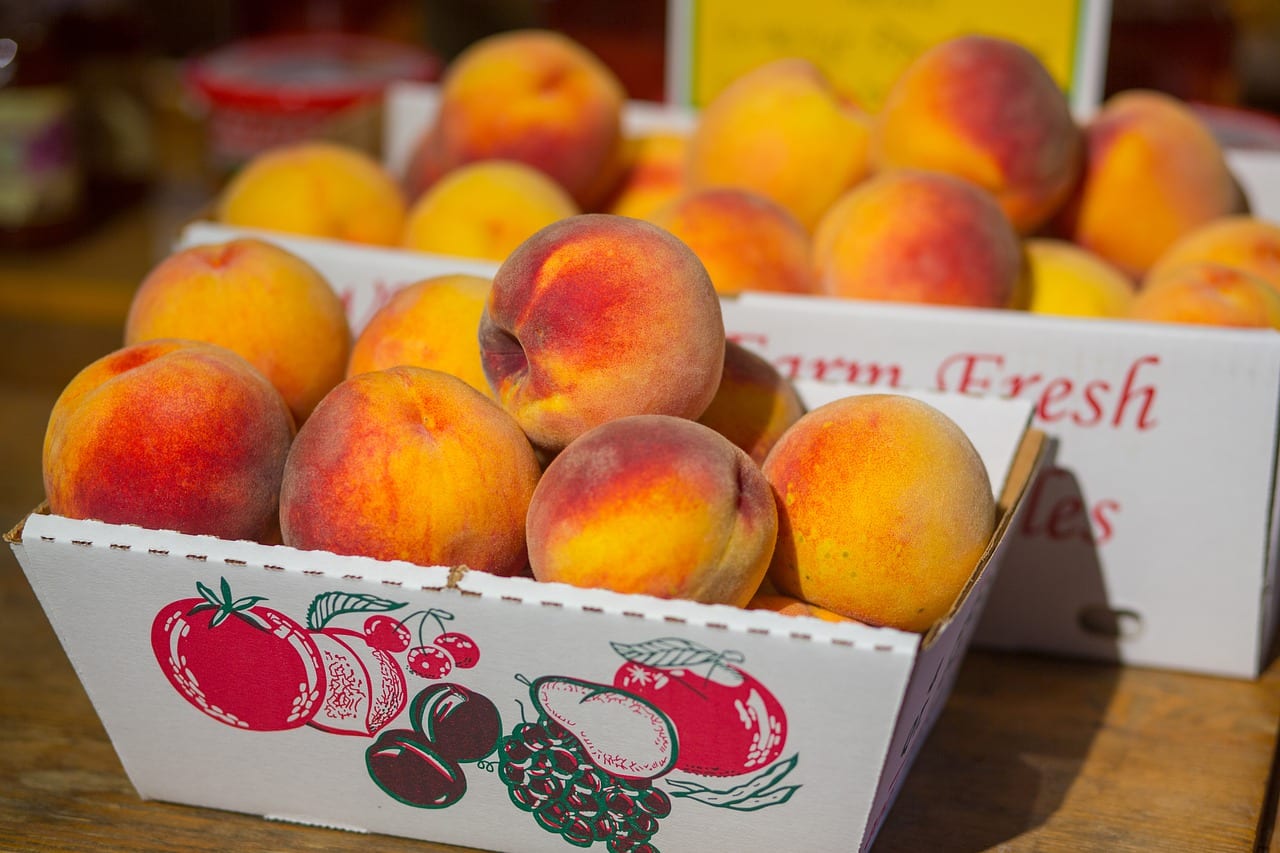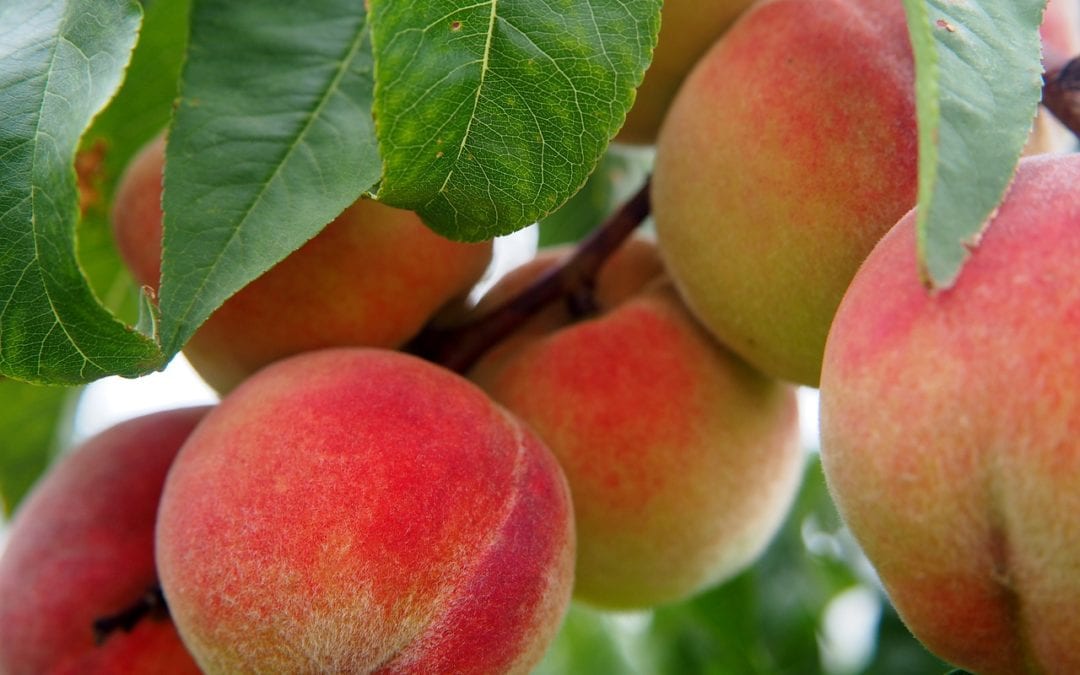Have you wondered what the term “chill hours” or “chilling hours” means in conjunction with fruit trees and their growing requirements? I admit when I first started work at Rainbow Gardens San Antonio, I was tasked with placing the informative plant signs in different sections of the nursery, including the fruit tree section. I saw the words, “required chill hours” on the signs for fruit trees, but didn’t really know what that meant. Turns out that knowing how many chill hours are required for individual varieties of fruit trees helps to make sure you are choosing a variety that is more likely to grow successfully in the San Antonio county you live in.
Chill hours are the number of hours that temperature needs to be lower than 45°F and higher than 32°F before an individual variety of fruit tree will set buds and blossom. Fruit trees must set buds and come into flower in order to produce fruit, so you can see how this duration of the appropriate weather temperature is a very important factor to successfully choosing and growing fruit trees.

Once you know the chill hours zone that your county matches up to and then you can research fruit trees with chill hour requirements within that range. This following link provides you with our Texas Hardiness Zone Map, and our Texas Chill Hour Map, which is broken down into fruit adaptability zones. Find your county within the zone and you’ll learn the range of chill hours required for fruit trees to grow successfully. Chill hours for the city of San Antonio run the range of 400-600 chill hours, depending on where you live in the city. We have many microclimates within San Antonio so it’s best to find your county within the map and use that as a reference.
- There is somewhat of a leeway of about 100 hours above or below the requirement.
- If you go above or below the chill hour range too far, you risk your fruit trees either not coming into flower (no fruit), or coming into flower too early (frozen fruit).
- Choosing a variety that has required chill hours as close to the recommendation for your county is best.
Types of fruit trees that are good for San Antonio include, but are not limited to: Figs, Peaches, Blackberries, Plums, Pears, Pecans, and Persimmons.
Chill hours for fruit trees are individual to each variety; not all peaches will have the same chill hour requirement. For example, a Surecrop peach variety has high chill requirements (1,000) and may be better suited to areas like North Texas while a La Felicicana or June Gold peach variety have medium chill hour requirements (600/650 respectively) and would be good choices for Central to upper Southern Texas, and Texstar peach only requires 450 chill hours. Get where I’m going? There are many options to choose from so knowing your chill hour zone is important. For recommended varieties of fruit trees, shrubs and vines listed by chill hour requirement zones, courtesy of Texas A&M, access the link in this sentence.

It’s not just chill hours that you should learn about when choosing your fruit trees. Here comes my Public Service Announcement concerning fruit trees, or any plant for that matter. When you thoroughly research the plants you are interested in incorporating into your landscape, you ALWAYS have a better chance at success. Learning what your fruit trees require for healthy growth (chill hours, sunlight, water needs, pollinator companion plants, etc…) leaves you with way less surprises or set backs that you might encounter if you don’t know anything about a plant before you buy it.
- Wouldn’t you want to know if you need a second fruit tree for adequate pollination to produce fruits, or if you could successfully harvest fruit with just one tree?
- How about finding out if a certain variety of fruit tree is more prone to insect or disease problems?
- It would also be helpful to know how many years it actually takes for your chosen fruit tree variety to produce a meaningful harvest; that way if you purchase a fruit tree that takes 5 years to harvest, you don’t think you have a dud when it’s only been two years and you’ve seen no fruit.
Research, learn, succeed!
~The Happy Gardener, Lisa Mulroy


Can an Air loom variety of apricot grow in the San Antonio area? I have seeds from a tree in Las Vegas Nevada that’s over 60 years old and have successfully started the seeds very easily but want to know if I can transplant some of my trees in San Antonio or in the Texas area I’m not sure where to go to get them to Produce fruit in the state.
Hi there,
Thank you for commenting. do you happen to know the variety of your heirloom apricot so we might better be able to help?
The problems we find with many apricot trees is that they are not very consistent in producing crops (some only producing 2 out of every 5 years), and that they are generally one of the first fruits to produce in spring. Sometimes this is so early that a late freeze can damage the crops. Choosing varieties that produce later or have hardier blooms and a longer bloom period can help with successful production. This is why it is beneficial to know the variety you are asking about. (Central Asian origins are the ones that bloom later.)
Take a look at this informative article that includes some environmental tweaks that you can employ to help your apricot achieve a later bloom time.
Can fruit trees be grown in the front yard in San Antonio Texas?
Provided you receive enough sunlight, fruit trees can be grown in any area of your landscape. I suppose you may need to check with your home owner association if you belong to one in case they have rules against that.
When can I plant peach trees in Bulverde?
Hi Susan,
The best time to plant fruit trees, like peaches, is in winter so they have the maximum time to get established before the heat of the summer sets in. The next best time is now, early spring. Get this done as soon as possible. Planting later in the spring means you will need to spend extra time, water, and care to make sure they will survive their first summer.
What is the recommended time for fertilizing a pfeifer pear tree
I’m attaching a link to an article from StarkBros that should be helpful for you to decide what fertilizer and when to fertilize your pear tree. Hope this helps.
I have just purchased a dwarf nectarine tree and plan to grow it in a pot. How big of a pot does it need to be in?
A 15-20 gallon pot should do the job for a permanent pot home. But if you don’t want to start that big, you can also choose a pot that is 2-3 size the diameter at first and then repot as it grows.